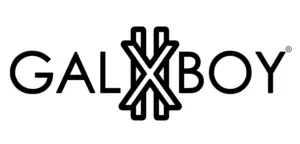Tips and tricks on checkout psychology & optimisation
You’ll need a deep understanding of checkout psychology and optimisation if you’re going to get your buyers to stop abandoning the carts and follow through right to the end.
But, combatting this problem isn’t as simple as implementing a few marketing and content-related changes. Rather, online retailers need to go beyond the surface, and speak to a consumer’s subconscious psychological needs and wants.
While we may think we make logical and rational decisions on a day-to-day basis, there are so many subconscious influences that play on our emotions and dictate our thoughts and judgment. As an online retailer, tapping into these psychological influences and applying them across your website, most importantly to your checkout page, is key in boosting conversions and increasing sales.
Let’s dive into these great tips and tricks on checkout psychology and optimisation and get those shoppers through your digital checkout counter.
Create a sense of urgency
We all have a FOMO (fear of missing out) when it comes to many things in life, online shopping included. Creating a sense of urgency plays on this and pushes those considering buying to do so now and avoid missing out. It can also generate demand that leads to sales that otherwise may not have happened. Add a countdown timer to prompt shoppers to proceed to the shopping checkout before losing items in their basket.
Limit product quantities
We all want what we can’t have right? The scarcity principle is based on the idea that when we can’t have something, we end up wanting it even more.Whether it’s the latest gadget or a new pair of shoes, knowing there’s a limited window of opportunity naturally increases our urgency to buy now. Show when items are low in stock in the product description. Time is another powerful tool to encourage scarcity. For example, when running a sale or special promotion, remind your customers they’re running out of time to make their decision.
‘I’lI have what she’s having’
It’s human nature to want to make decisions based on what others are doing, whether we do so consciously or not – this is known as social proof. In the context of online shopping, buyer decisions are dictated by the behaviour of friends, family and the reviews of others because subconsciously, knowing how other shoppers have behaved in the past makes us feel secure in our own decisions. Studies show that 84% of shoppers now read online reviews and the likelihood of a product getting purchased increases by 270% when it gets five reviews.
The left-digit effect
When a user sees a price of R399.99 instead of R400 it makes a significant psychological difference. The ‘left-digit effect’ reflects how the left-most digit disproportionately affects our perception of price. Despite being a 1 cent difference, users will psychologically perceive your product as more affordable. Try implementing this strategy across your product offering and see if there is a marked increase in sales.
The centre stage effect
Psychologically, we have a preferential bias towards items located in the middle, this is known as the centre stage effect. Studies have shown that we are programmed to think products are more popular if placed in the middle of two other items. In an eCommerce context, try including three similar products instead of two and test the results.
Risk aversion
Zero-risk bias means our minds have a tendency to prefer paths that are certain and appear to have no risks. This is why money-back and quality guarantees, as well as trial offers, are so appealing to consumers. Help your customers feel secure in their decision to purchase on your site by placing assurances on your checkout page as well as in your terms and conditions and shipping and returns policy.
Flexible payment solutions
Obviously, our obsession at Payflex is to help you increase sales but we do this by allowing you to offer a flexible payment solution to your consumer. Cart abandonment rates increase when a person realises their carts are full but their wallets are empty. However, you don’t want to be responsible for throwing your customers into a destructive debt spiral. That’s why we recommend having a flexible no-interest, part payment solution at checkout. It increases average order values by up to 70% and decreases cart abandonment by 30%. Everybody wins.
Conclusion
The product you’re selling might be great. However, if you don’t understand your audience’s preferences and psychological triggers, you will almost certainly come out second-best. Ultimately, in a crowded and competitive online marketplace, sifting through the noise by speaking straight to a consumer’s deep-rooted psychological needs and wants, will put you at a distinct advantage. Harness the power of your web data and analytics to help you get inside your audience’s heads.























































